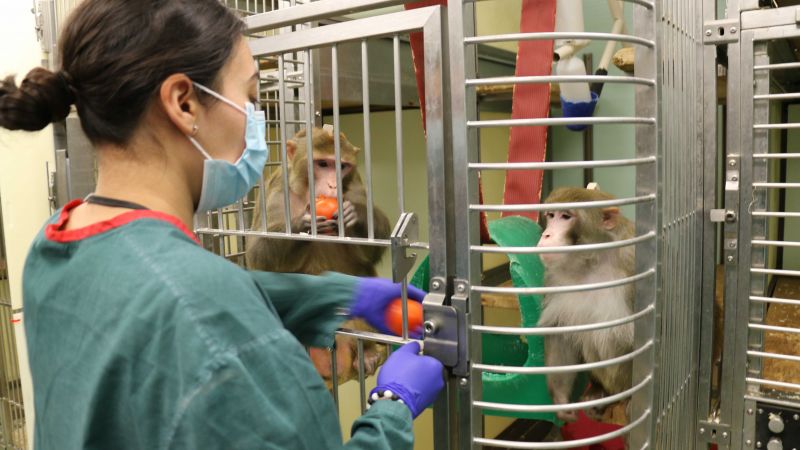
Geoff Butcher has Parkinson's disease. He is also a volunteer speaker for Understanding Animal Research (UAR) so was an obvious candidate to interview staff at King’s College, London about their use of marmosets in research into Parkinson’s disease.
Geoff used to be a scientist, working with malaria, and actually started his research career in King’s College. My filming day was made considerably more interesting listening into Geoff exchanging anecdotes with King’s staff about their past experiences. It appears working conditions now – for both people and animals – have improved considerably – and incidents, such as escaping large primates needing to be enticed back into their cages, are very much a thing of the distant past.
I discovered marmosets are an animal commonly used to investigate Parkinson's disease. They can model the disease because of a chemical called MPTP. This is toxic to primates and specifically destroys the substantia nigra – the part of the brain associated with the fine control of movement. It is damage to the substantia nigra that causes many of the symptoms of Parkinson's disease.
Marmosets that have been treated with MPTP develop Parkinsonian like symptoms but after a period of recovery, can again lead ‘normal’ lives. They can feed, build nests and move around their living-space. They do however move more slowly so improvements in their movement can be measured quantitatively, giving a very clear measure of the effectiveness of new drug treatments.
And because marmosets are such a good model, trials in humans have followed on directly after successful trials in marmosets. Although the discovery of MPTP was almost incidental to our interview I was fascinated by the accidental discovery of this very specific neuro-toxin.
After filming the interview I came across a book called The Case of The Frozen Addicts by J. William Langston and Jon Palfreman (reviewed here: http://www.nejm.org/doi/full/10.1056/NEJM199612263352618) Although it’s out of print I was able to order a copy and when it arrived it turned out to be a fascinating read, combining detective story with a voyage of scientific discovery. It describes the awful fate of a handful of drug users – and some very unfortunate scientists and technicians – who were accidentally poisoned by MPTP.
Because the book was written in 1996 about events in the previous decades the science is sometimes a little dated, but don’t let that put you off from a fascinating read. It has left me wanting to find out more about how treatments for Parkinson’s disease have improved since 1996 – as well as wondering how the unfortunate victims of MPTP have fared in the intervening years.
Last edited: 11 March 2022 12:28



